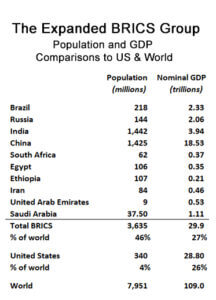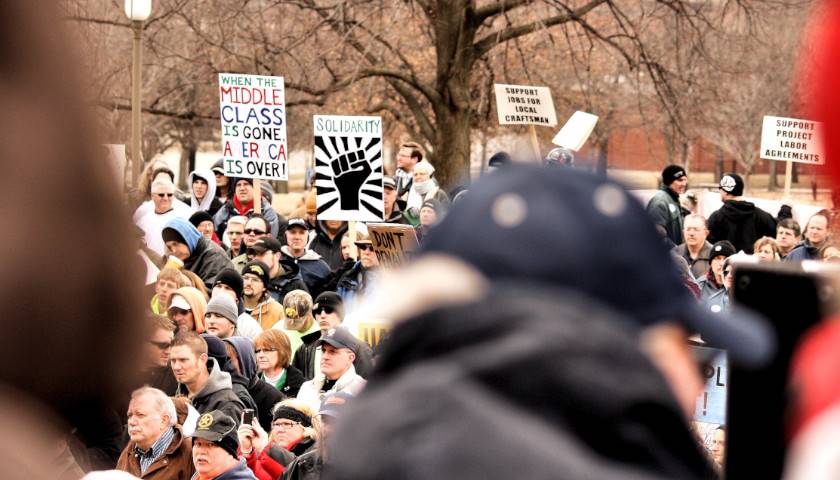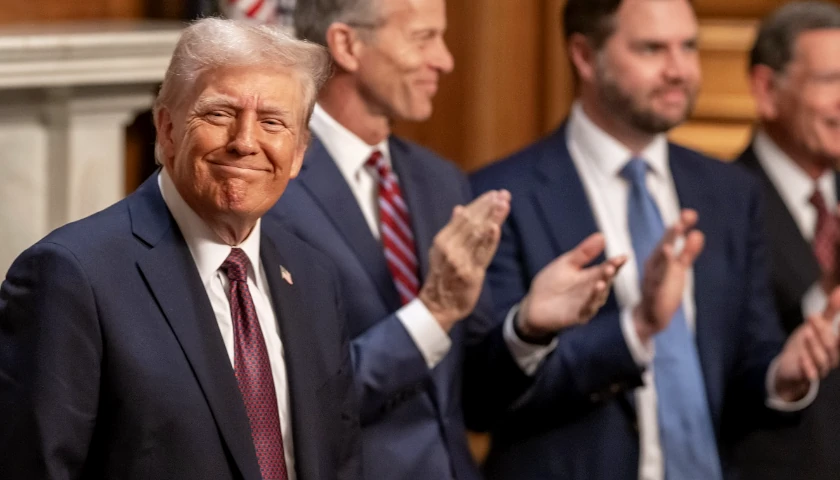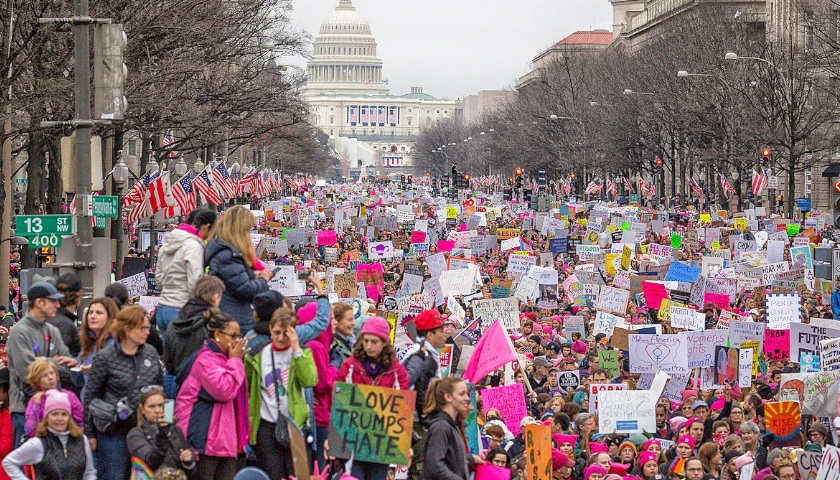by Edward Ring
An insightful, if pithy, tweet surfaced recently on my feed. It nicely summarized what happened to neutralize an awakening electorate in America over the past decade:
They got you fighting a culture war to stop you from fighting a class war. It was designed that way in 2012 when the woke left & right were created. Occupy Wall Street/The Tea Party were making inroads uniting the political spectrum & the people against Wall Street following the 2008 crash. ‘We’ll get them to argue about women & their cocks instead’
Andrew Breitbart famously said politics is downstream from culture. He’s right, but we still have to recognize that when every American institution is pushing transgenderism and abortion on demand, their primary objective is not to turn America into a transgender, abortion-loving nation. That may motivate many of them, but the power behind the woke movement has a very different priority: they want to divide us.
The motivation for populist unity ought to have America’s establishment elites feeling threatened. Their economic model is systematically disenfranchising the entire American middle class and denying upward mobility to everyone else. In 2023, one percent of the population controlled 76 percent of all household wealth in America, and overall, the top 10 percent owned more than the bottom 90 percent combined. To disparage this inequality may correctly be dismissed as class envy, but it is nonetheless appropriate to criticize why America’s elites are mopping up greater and greater percentages of total wealth. The game is rigged, and it isn’t racial or gender “privilege” that’s responsible. It’s also not “unbridled capitalism.” On the contrary, it is excessive government regulation that catalyzes centralization of private wealth.
Wealth inequality is getting worse because lower- and middle-class households and small businesses do not have the sophistication and resources to navigate the regulatory obstacles to achieving and maintaining prosperity and profits. A billionaire, or a multi-billion dollar corporation, can easily hire the attorneys and consultants needed to avoid taxes and comply with an otherwise crippling array of regulations. They can access the most favorable credit markets, they can diversify their investments, and they have the financial resilience to withstand economic shocks that will destroy middle-income households and small businesses.
We saw this during the COVID pandemic, which triggered what was possibly the greatest spasm of regulatory overreach in American history. Retail businesses that were already reeling from online competition were forced to shut down, along with manufacturers and business offices. Emerging in the aftermath of the pandemic were online behemoths: Amazon, Apple, Microsoft, Google, and Facebook, with market caps that had doubled or even tripled. And while households and small businesses had been increasingly challenged for years, the inflationary leap since COVID came along made those challenges much worse.
And against this milieu, we argue over the definition of a woman.
The question we should be asking is: What are we being distracted from? Where are America’s elites, along with their counterparts throughout Western Europe, trying to take us? Why is it, as if inflation weren’t bad enough thanks to trillions of magically materializing dollars, that we have to shut down our conventional energy industry in favor of “renewables,” shut down our farms and cull our livestock to cope with the “climate crisis?” No wonder everything is so expensive. What is the point?
One answer, at least for America, is that we are trying to preserve the global demand for dollars. We monetize the world with dollars through, for example, our trade deficit, through remittances from foreigners working in the U.S. sending their earnings back to their homes abroad, through hundreds of military bases spending money in foreign nations, or through foreign aid. And all those dollars can come back to the U.S. in the form of investments by foreigners who purchase our assets: our factories, our real estate, our farmland, and our mineral resources. So why not utilize environmentalist regulations to limit the supply of everything and make those assets cost more?
What a concept! “Green” policies help us collateralize our currency. So what if ordinary Americans can’t afford to live in America anymore? If you’re a member of the green elite, you are indifferent to gas that costs $6 a gallon or “starter homes” that cost $850,000. It’s pocket change.
There are better solutions to America’s debt binge. There are ways to restore upward mobility and make products and services reasonably affordable again. In the long run, they would also guarantee the status of the dollar as a hard currency. They’re not complicated, either, but they’re controversial because they will reverse the ongoing transfer of what remains of decentralized private wealth into the pockets of oligarchs.
Here, then, are some dollar-hardening, debt-eliminating alternatives to what author Steve Milloy quite aptly refers to as Green Hell: Spend public money on cost-effective infrastructure that yields long-term economic dividends instead of on “renewables” and on welfare payments. Totally abolish welfare for anyone able to work. Restrict immigration to a limited number of highly qualified and productive individuals who arrive legally. Rewrite (and in some cases repeal) environmental laws in order to restore the ability for entrepreneurs to log, mine, quarry, farm, ranch, manufacture, and build homes. Deregulate so small businesses can again compete with big businesses. Dismantle the entire DEI/ESG industrial complex and incentivize hiring, contracting, and investing based purely on merit. Put criminals in jail and provide the homeless with inexpensive congregate shelters where they are required to be sober and can recover their lives.
That’s it. That’s all there is to it.
As it is, these practical solutions had better come soon. America’s ability to print as much money as it wants while still retaining a reasonably hard currency has just taken a major hit. On June 9, Saudi Arabia declined to renew their 50-year agreement to sell oil exclusively in dollars. This comes at the same time as the BRICS group—which is committed to trade using currencies other than the US dollar—has now expanded to include ten nations: Brazil, Russia, India, China, South Africa, Egypt, Iran, the United Arab Emirates, Saudi Arabia and Ethiopia.
When nations in the rest of the world decide what currency to use for international trade, shall they continue to use the dollar, knowing that if they incur the wrath of the US government, their dollar assets may be seized? Once the US started using seized Russian assets to finance war against Russia, a message was sent to every sovereign wealth fund in the world: Your US dollar holdings are not safe. Is the BRICS group a safer alternative? Here is how the GDP of the BRICs group compares to the US and the world.

As shown on the chart, the BRICS group already represents 27 percent of global GDP, narrowly eclipsing the US at 26 percent. But this is nominal GDP, which doesn’t take into account the lower cost of living in most of the BRICS nations compared to the US. One way to get an idea of the purchasing power GDP of the BRICS nations is to consider their total population, which is nearly half the world at 46 percent, compared to 4 percent for the US. The BRICS nations represent a formidable challenge to the US dollar.
Which brings us back to the question of where the American and European elites are trying to take us—and the world—in the near future. Because if the threat of Muammar Gaddafi trying to form an African currency union and of Saddam Hussein selling Iraq’s oil in Euros, both precipitated the strangely coincidental experience of US military intervention, what coincidence awaits us as BRICS begins to flex its muscles?
Another massive coincidence seems to be the timing of the COVID pandemic, coming at the very moment populist movements around the world were gaining momentum, not least of which was the very real possibility of President Trump getting reelected. What did they fear? Four more years of peace and prosperity? Today, as populist parties gain unprecedented momentum in Europe, the words “far right” tumble out of BBC and Deutsch Welle broadcasts at a rate of perhaps 20 or 30 per minute. Meanwhile, Trump’s possible victory in November 2024 is being marketed by NPR, ABC, CBS and NBC as a looming catastrophe for democracy. Why is every major western news organization pushing such obvious hyperbole?
The goals behind current policies of western nations, led by the US, appear to be to degrade their own middle class while engaging in WW3 brinkmanship with Russia. These goals are inexplicable unless they are motivated by the false and self-serving belief that middle-class lifestyles are economically and ecologically unsustainable and must end, along with a grandiose desire to conquer the world, or, at the very least, preserve the ability for the United States Treasury to print currency at will and without consequences.
Remember this the next time your political organizing and personal obsessions gravitate towards fighting the culture wars. They matter a great deal and cannot be ignored. But in spite of how much you are being impelled to think so, they are not on center stage.
– – –
Edward Ring is an author for American Greatness.
Photo “Middle Class Rally” by Phil Roeder CC BY 2.0.



